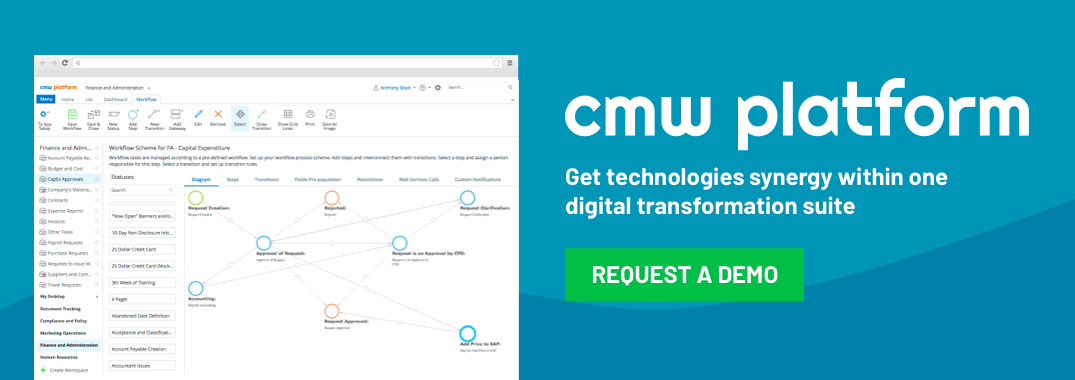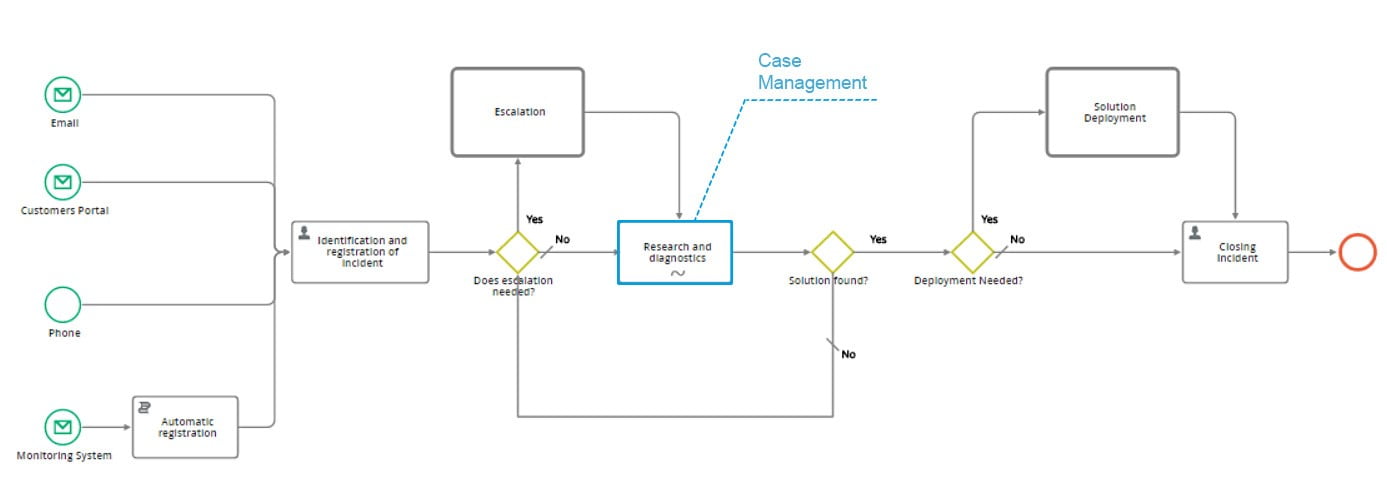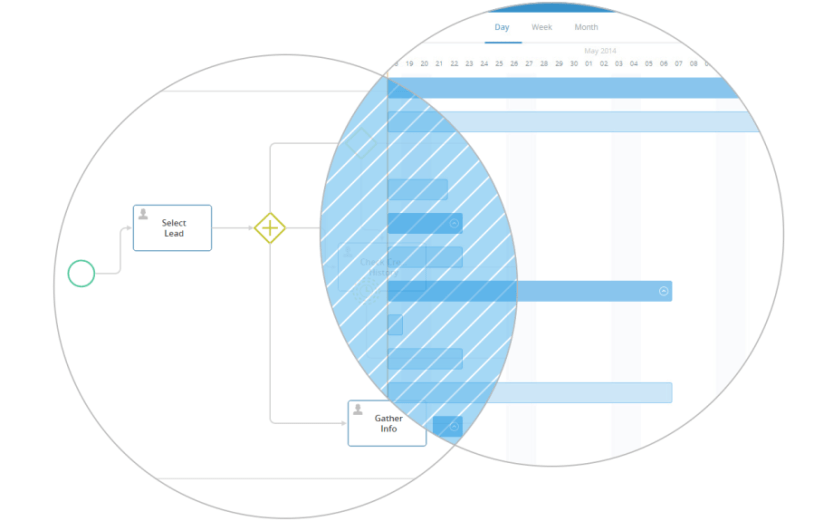Why Case Management is an essential part of BPM
April 12, 2024
When we start talking about technology, Digital Transformation seems to be the most prevalent topic among executives. Each day the world is becoming more digital with industries ranging from construction to healthcare further relying on technology. The growing presence of “Internet of Things”, where mobility seems to permeate every single part of the business cycle, has had a large effect on enterprises and corporate culture.  One of the way’s for corporations to deal with this rising challenge is making both customer facing and back-end processes digital. To achieve this successfully, we need Business Process Management Software (BPMS).
One of the way’s for corporations to deal with this rising challenge is making both customer facing and back-end processes digital. To achieve this successfully, we need Business Process Management Software (BPMS).
And here is where issues start to pile up. Process automation can become a trap, besides some processes may include steps that are not structured or not properly arranged. Such processes and additional large transformational changes are impossible without case management techniques. This method is somewhere in between processes and projects. Now, let us define what both BPM and Case Management really mean.
Business Process Management (BPM) as defined by Nathaniel Palmer, a renowned thought leader in BPM:
“(BPM) is a discipline involving any combination of modeling, automation, execution, control, measurement and optimization of business activity flows, in support of enterprise goals, spanning systems, employees, customers and partners.”At the same time, Case Management has been described broadly as operating on content instead of focusing on particular documents or images. A “case” is a compilation of advanced analytics, collaboration, business rules, and occasionally even social computing that can involve a customer, patient, or supplier. If we are looking for a more advanced definition we can refer to Keith Swenson who defined Case Management as following:
“Case Management is the management of long-lived collaborative processes that coordinate knowledge, content, correspondence and resources to progress a case to achieve a particular goal.”Now, when we have at least a general understanding of Case Management and BPM, let’s have a look at a real process with a combination of processes, projects and cases under one “roof”. Below you can see an Incident Management process built with Comindware BPMS (Business Process Management Software) that requires Case Management at one of the steps.

Usually we need Case Management solution, when business activities are not structured enough and therefore cannot be handled through traditional business process management approach. Besides making processes structured, Case Management brings following advantages for users:
- Management of resources across both processes and cases: Comindware’s single- platform architecture enables management of resources across all types of collaborative work,
- Unified Business Data: all the data, which includes suppliers, customers, issues, requests etc. can be stored with the cases, which inadvertently improves both team performance and data accuracy,
- Flexible transition between Processes and Cases: when operations supported by the case management system become predictable and structured, they can be transitioned to the Business Process Management schema, while the business remains intact.

Also, since case tasks are fundamentally defined by an individual, it is substantially more flexible feature. In addition, process management requires a significant amount of implementation and testing effort before any process instances can be launched. With Case Management and proper tools, this can be achieved within a day.
To sum up, Case Management provides us with the critical advantage of dealing with unpredictable and unstructured tasks. It is an absolute “must”, if we are talking about new business challenges and digital enterprises.
